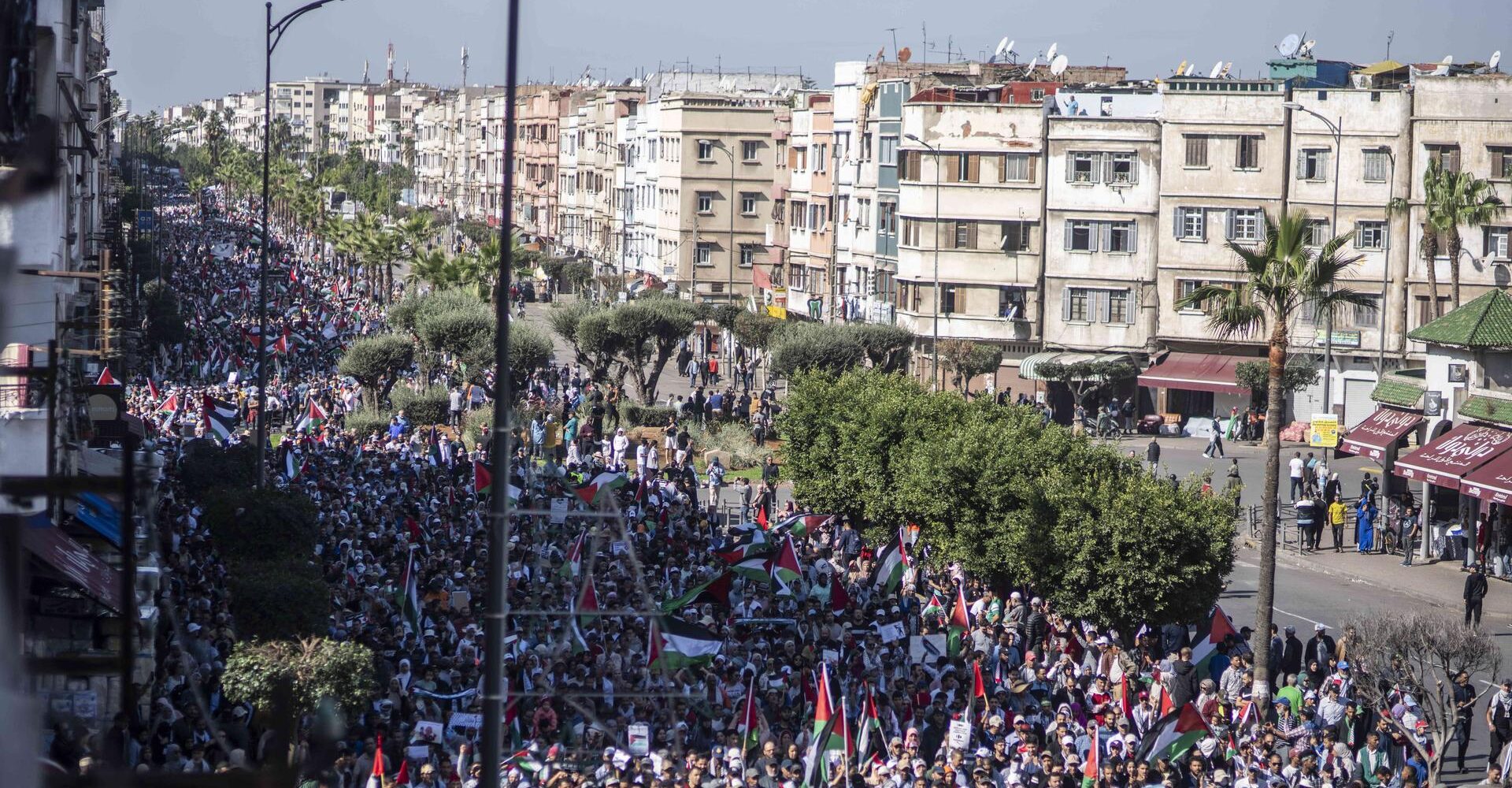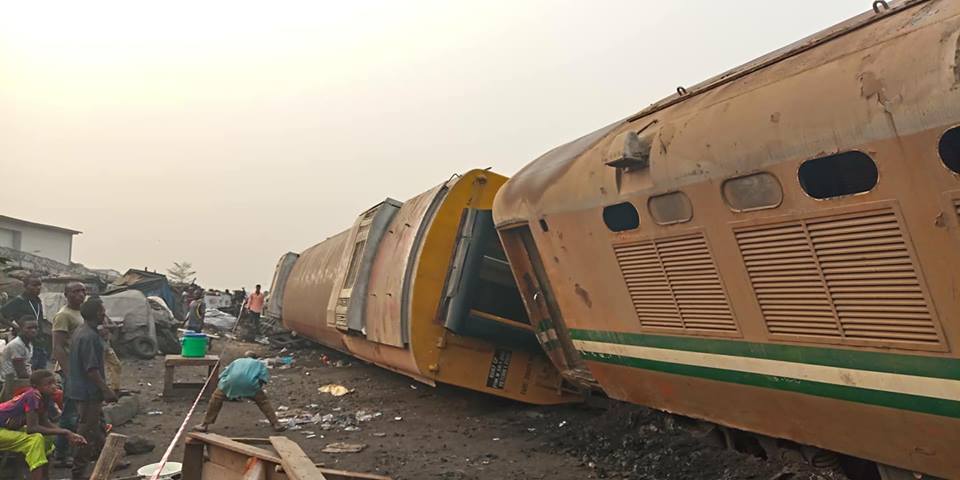Israeli military acknowledges destroying Ottoman-era bathhouse while targeting Hamas in Gaza
The Israel Defense Forces struck a centuries-old Ottoman-era bathhouse when it targeted a claimed “Hamas terrorist squad” in mid-December, the IDF confirmed Sunday.
The Hamam al-Samra, in the Al-Zeitoun neighborhood of northern Gaza, was said to have been built in the 14th century and was the only public bathhouse in the Gaza Strip. It was destroyed in an Israeli airstrike on December 15, its owner, Salim Al-Wazeer, told CNN.
“A Hamas terrorist squad was based in the aforementioned structure which had also contained a network of terror tunnels. The IDF struck the terror target using precision munitions and while minimizing damage to uninvolved persons,” the IDF claimed in a statement.
The bathhouse had seen annual renovations during the month of Ramadan since 1999, the owner told CNN, adding that he hopes to one day rebuild the hammam.1 h
Gazans displaced to Rafah tell CNN of sky-high food prices and acute overcrowding
Palestinians displaced inside Gaza have described cramped living conditions, sky-high prices for food, children going hungry and poor sanitation.
CNN spoke by phone with several people trying to survive in Rafah, in the south, where tens of thousands have fled to despite it already being the most densely populated part of Gaza.
“The way I am getting by is by begging here and there and taking help from anyone,” said Abu Misbah, a 51-year-old building worker trying to support a family of 10.
Vegetables and fruit were unaffordable, he said. His children asked for oranges, but he was not able to buy them.
“We never [been] through this situation before; we were a middle-class family,” he said. “Now since the war we are buying dates which we used to find everywhere for free. We want a solution to our miserable suffering.”
Umm Omar, 50, is also displaced in Rafah, and lives in a tent. During the truce, they had briefly returned home only to find all the windows and solar panels broken, and the kitchen destroyed.
“We are nine people in a tent of two meters by one meter,” she said. “We have bought this camping tent ourselves; no-one helped us or provided it.”
Omar said they were getting by on canned food and estimated that most foods were at least four times as expensive as before the war. Medication is also hard to find.
“Life is difficult and humiliating; the word humiliating is not even close to describing it,” she told CNN.
In recent days, civilians desperate for food have been seen besieging aid trucks coming into Gaza.
The United Nations has warned that the humanitarian situation in southern Gaza is deteriorating. It warned that the volume of aid entering the enclave “remains woefully inadequate.”2 h
IDF instructs people in Gaza to use coastal road amid fighting in Khan Younis

The Israel Defense Forces has issued what it calls “several urgent instructions” to people in Gaza on what it says are safe routes in the midst of intensified fighting near the city of Khan Younis in southern Gaza.
The IDF posted instructions in Arabic as well as a map on X, saying that the fighting and advance of Israeli forces in the Khan Younis area meant that civilians could not use the main Salah Al-Din axis that runs north to south through the middle of Gaza.
Instead, the IDF said it would allow humanitarian movement through a separate route to the west of Khan Younis, along the coastal road, allowing access to parts of central Gaza, including Deir Al-Balah, which the UN says is overcrowded with displaced people.
The IDF also announced a four-hour “tactical suspension of military activities” in Rafah camp in the south to allow for humanitarian resupply.
Given the lack of communications and internet in Gaza, it’s unclear how many people are aware of the IDF’s instruction.
Israel reports fighting in north as it expands operations in southern and central Gaza
Even as Israel pushes on in central and southern Gaza after announcing it was extending its operations, fighting continues in the north of the territory.
On Saturday, the IDF said that there was also fighting in the north in the Shejaiya area, where “ground troops located a terrorist cell operating adjacent to the forces, and a terrorist armed with an RPG. The troops directed an IDF aircraft that struck and eliminated the cell.”
And in Beit Lahia, which has already seen extensive destruction, the IDF said that “two Hamas military compounds were dismantled by the troops, who had located numerous weapons, explosive devices, guns, military equipment, communication devices in the compounds prior to the strike. “
The IDF said that in Gaza City – also in the north – “troops, in coordination with aircraft, killed dozens of terrorists. In the space of three hours, four incidents of terrorist identifications occurred and the IAF struck over 15 armed terrorists. Additionally, battles took place where further terrorists were killed. “
Hamas’ military wing, Al Qassam Brigades, says it continues to fight Israeli forces in many parts of Gaza, including Bureij camp in the center.
A long war lies ahead: Israel’s initial focus following the October 7 attacks was northern Gaza, before it expanded its operations to the south.
Israel aims to destroy Hamas after their surprise attacks left 1,200 Israelis dead, as well as bring back the hostages the militant group captured.
Its military says the war could last “many more months.”5 h
UN alarm grows as more people move into the already most densely populated area of Gaza
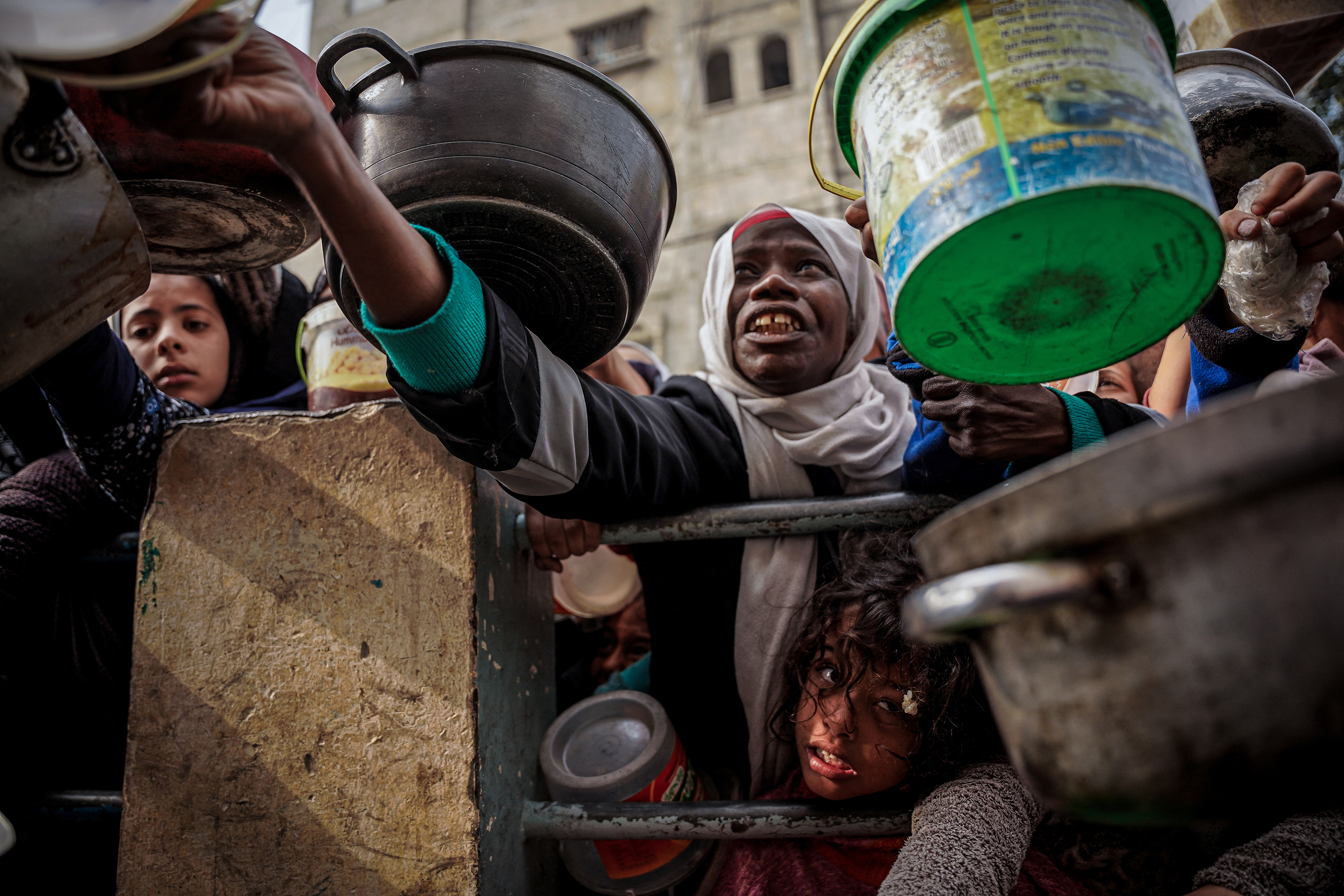
The United Nations has expressed alarm at the growing density of internally displaced people in parts of the Gaza Strip, as the Israeli military expands operations into more parts of central and southern Gaza.
In its latest update, the UN Office for the Coordination of Humanitarian Affairs said that at least 100,000 internally displaced people had arrived in Rafah, the most southerly city in Gaza, in recent days, following the intensification of hostilities in Khan Younis and Deir Al Balah, and the Israeli army’s evacuation orders.
The OCHA said that Rafah was already the most densely populated area in Gaza, with more than 12,000 people per square kilometre.
There is also an ongoing influx into parts of Deir Al Balah in central Gaza. The OCHA said that instructions accompanying an online map published by the Israeli authorities “call on residents to move immediately to shelters in Deir Al Balah, which are already overcrowded, hosting several hundred thousand IDPs. The scope of displacement resulting from this evacuation order remains unclear.”
The OCHA also reported figures from the World Health Organization that show the spread of diseases in Gaza, “particularly due to the recent mass displacements across the south of Gaza. Some families have been forced to move multiple times.”
Close to 180,000 people living in shelters are suffering from upper respiratory infections; there are 136,400 cases of diarrhoea (half of them among children under five years old); 55,400 cases of lice and scabies; 42,700 cases of skin rash, as well as outbreaks of jaundice and meningitis.
“Lack of food, basic survival items, and poor hygiene, further exacerbate the already dire living conditions of IDPs, amplify protection and mental health issues, and increase the spread of disease,” OCHA said.
Israel presses on: The OCHA said that on Friday, multiple locations were targeted by the Israeli military in Khan Younis and Rafah in southern Gaza, with airstrikes and missiles striking housing units and infrastructure, reportedly resulting in high numbers of fatalities in areas where Palestinians have relocated.
As it presses on with its campaign, Israel has repeatedly called on residents in different parts of Gaza to leave but the UN has previously warned they have nowhere to go.
CNN analysis found that Israel has struck at least three locations in Gaza to which it had ordered civilians to evacuate to since the beginning of the war in October. 10 h
Israel expands Gaza offensive as UN officials raise alarms about the peril for civilians. Here’s the latest
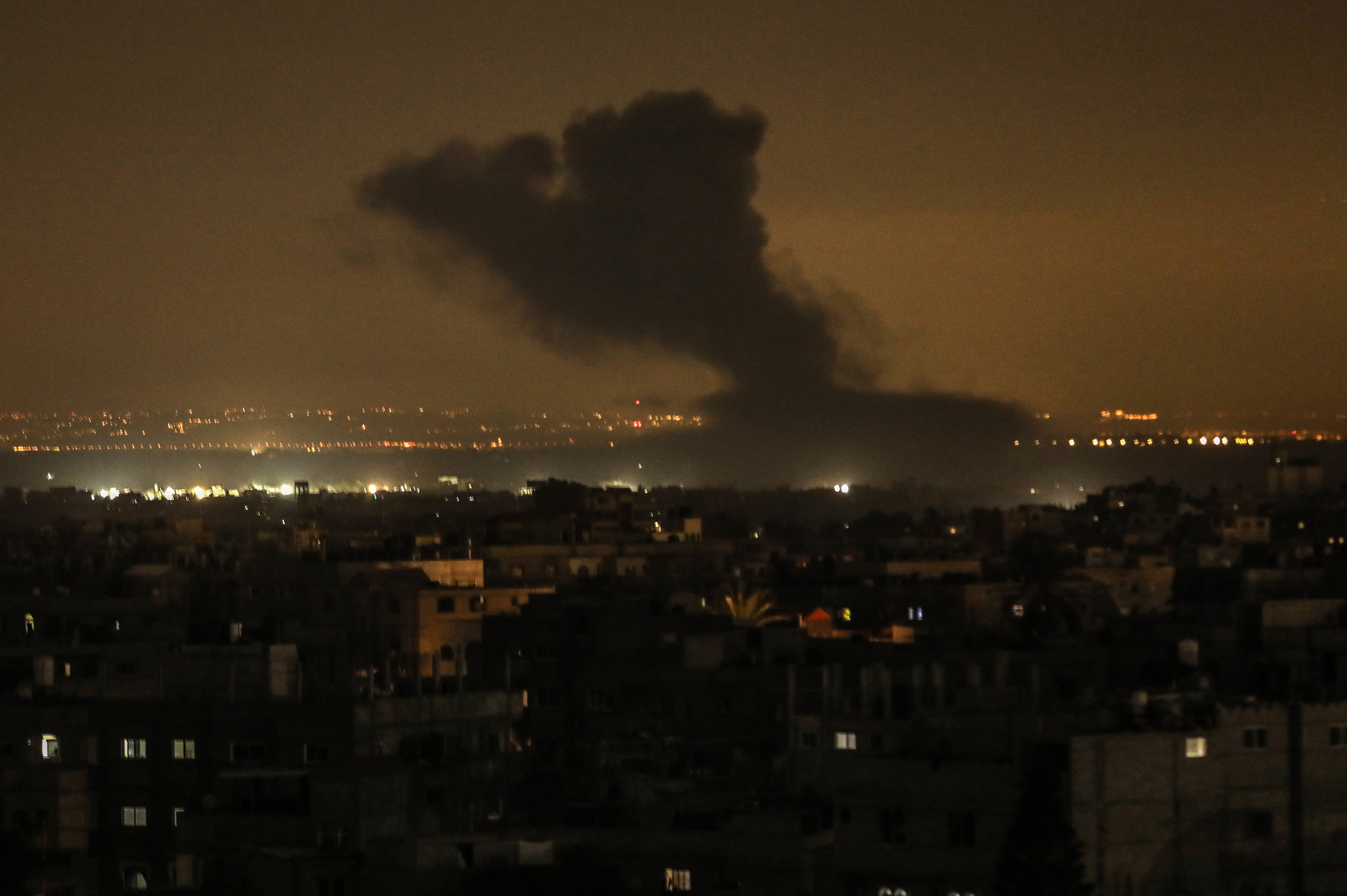
Israel’s military said it was “extending operations” and dismantling Hamas infrastructure in the Khan Younis area of southern Gaza on Friday, while also claiming to have destroyed a network of tunnels near Gaza City along with one of the “hideout apartments” belonging to Hamas leader Yahya Sinwar.
While the Israel Defense Forces reported its progress on the ground, officials with the United Nations are again raising the alarm about the consequences for Gaza’s civilians.
The UN Relief and Works Agency (UNRWA) said in a post on X Thursday that over 150,000 people “have nowhere to go” after the latest IDF warning to evacuate large portions of central Gaza.
Even civilians who have reached shelters have not always been able to escape harm. The UNRWA said Friday that at least 308 people taking refuge in its shelters had been killed — and at least 1,095 others wounded — since the most recent fighting began in the enclave on October 7.
And, the UN relief chief on Thursday described the frustrations of getting aid into the enclave, where an acute hunger crisis is impacting millions. UN Under-Secretary-General for Humanitarian Affairs and Emergency Relief Coordinator Martin Griffiths described “constant bombardments. Poor communications. Damaged roads. Convoys shot at. Delays at checkpoints.” He added that “this is an impossible situation for people of Gaza and those trying to help them.”
Aid dispatch through Israel-Gaza Kerem Shalom crossing resumes after four-day pause, UN says

Dispatch of aid into Gaza through the Kerem Shalom crossing has resumed after it was suspended for several days due to “security incidents,” the United Nations Office for the Coordination of Humanitarian Affairs (OCHA) said Friday.
A total of 81 trucks carrying food and medicine entered Gaza on Friday through both the Kerem Shalom crossing from Israel and the Rafah crossing from Egypt, the UN agency reported.
But OCHA also warned the volume of aid entering the ravaged Palestinian enclave “remains woefully inadequate.” Before October 7, the UN reported an average daily delivery of 455 trucks carrying commercial goods into Gaza.
Some background: The Kerem Shalom crossing was closed from December 25 to 28 due to “security incidents” that had been reported in its vicinity since it was opened on December 17, according to OCHA.
Those incidents included a deadly drone strike on December 25, the seizing of aid from food convoys by desperate local communities and “unannounced and uncoordinated prisoner and casualty transfers from Israel which rendered the crossing unusable for hours at a time,” the agency said.
Earlier on Friday, Tal Heinrich, spokesperson for the Israeli prime minister, said the UN requested the closure of the crossing on Tuesday, Wednesday and Thursday “for aid inspections, due to congestion on the Gaza side.”
Heinrich also insisted that Israel was not limiting the amount of humanitarian aid that can enter the enclave, saying that suggesting otherwise is a “fallacy.”10 h
United Nations relief chief condemns firing on aid convoy in Gaza
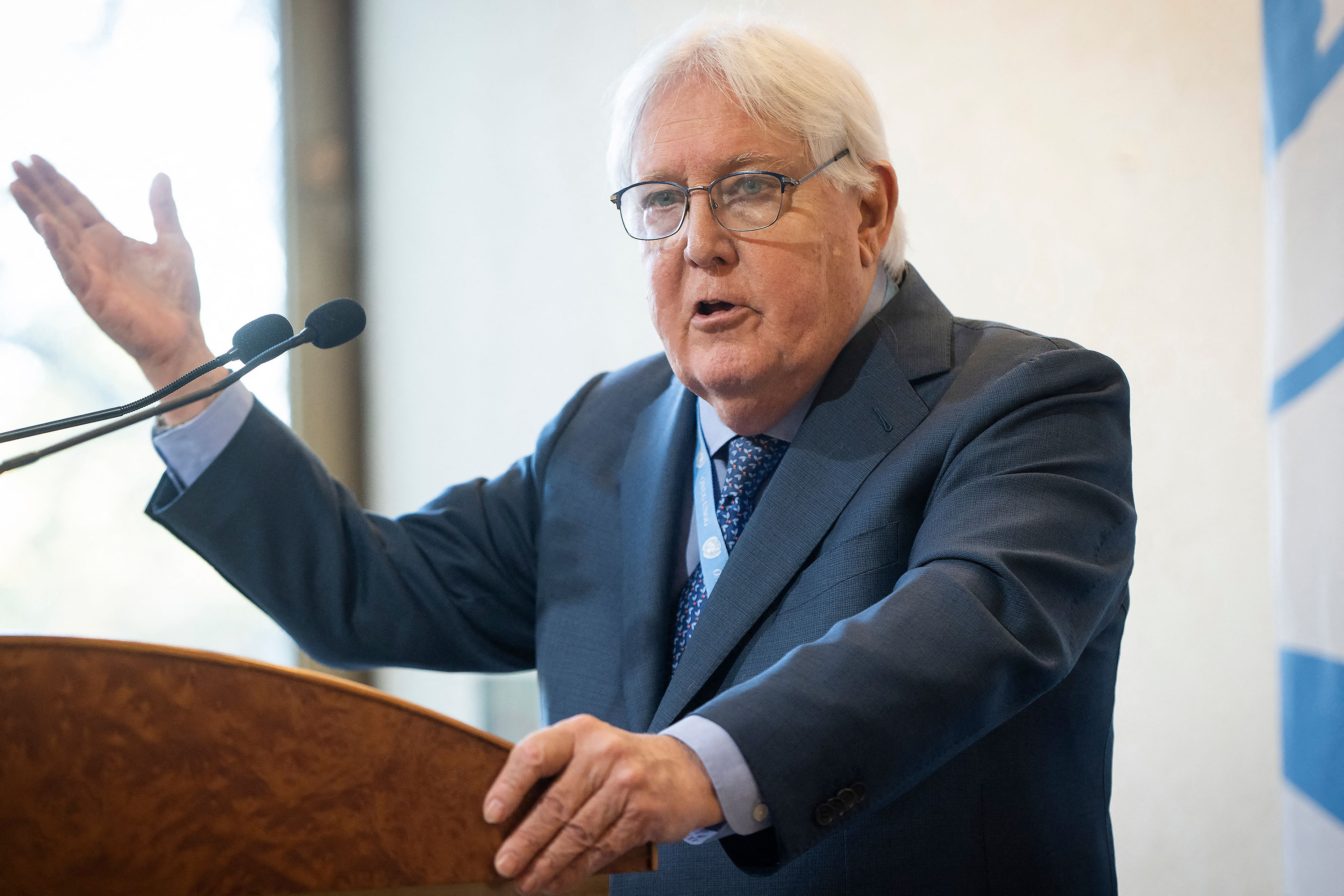
The United Nations relief chief Martin Griffiths issued a statement Friday condemning a UN aid convoy being fired upon the previous day in Gaza.
“The convoy was clearly marked and its movements were coordinated with the parties. Attacks on humanitarian workers are unlawful,” Griffiths said.
The UN Relief and Works Agency (UNRWA) in Gaza has said the convoy was fired on by Israeli soldiers, according to the organization’s director Thomas White.
The Israeli military told CNN it is investigating the incident.
“We never, ever intentionally fire on a humanitarian organization,” Israeli military spokesperson Doron Spielman told CNN on Friday. “If this was a mistake and if this is verified, we will come forth and say it.”
The convoy was made up of seven UN vehicles, including two armored vehicles, with their exteriors marked with the letters “UN,” UNRWA Communications Director Juliette Touma told CNN on Friday.
Touma also said the convoy had been asked to change its route.
It is not yet clear why the convoy was asked to make the change, and how much time elapsed between the reported request to change the convoy’s route and the reported firing by Israeli soldiers.11 h
Media amplifications of Israel’s claims against UNRWA result in “baseless misinformation,” UNRWA chief says
The chief of the United Nations Relief and Works Agency for Palestine Refugees in the Near East (UNRWA) is urging media organizations to verify information, including from government officials, before publishing.
In a statement Friday, UNRWA chief Philippe Lazzarini responded to claims from Israeli officials blaming UNRWA for aid delivery gaps in Gaza.
“Over the past days, several statements from Israeli officials have insinuated or directly held UNRWA responsible for gaps in aid deliveries in the Gaza Strip,” Lazzarini said. “These statements were amplified by Israeli and other mainstream and social media, creating a stream of baseless misinformation.”
On Friday, Israeli government spokesperson Eylon Levy accused UNRWA of covering up for Hamas’ alleged hijacking of aid in Gaza, describing the UN’s aid mechanism as “woefully unsuccessful.”
Earlier in December, Israel’s Coordinator of Government Activities in the Territories (COGAT) appeared to blame the UN for aid delay, saying it “must do better.”
Lazzarini said even after the opening of Kerem Shalom border crossing for aid delivery, Israeli authorities have severely restricted humanitarian access through constant bombardment, regular disruptions of phone and internet services, long delays at the Rafah and Kerem Shalom crossings as well as restricted access to the northern part of the strip.
“I call on the Israeli Authorities, other parties to the conflict and those with influence over them to safeguard an environment for safe and unimpeded delivery of humanitarian aid,” Lazzarini said. “This is not the time to exchange accusations and promote misinformation.”
CNN

